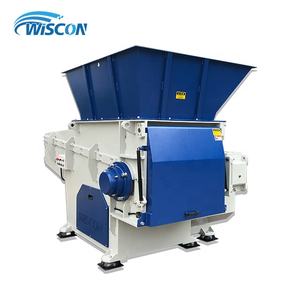
High Performance 18.5kw 37kw 45kw 55kw 75kw Waste Shredder Machine Plastics Bottle Pipes Pp/pe Lump Block Single Shaft Shredder


OUNAISI Factory Direct Sales PET PVC Bottle Waste Recycling Single Plastic Crusher Machine With Low Price





Acrylic waste, a byproduct of both industrial and consumer activities, poses a significant challenge in environmental conservation. This material, prevalent in numerous products, from garments to home furnishings, requires careful management to mitigate its impact on the environment. As a category, acrylic waste encompasses all forms of waste material derived from acrylic fibers, including offcuts, defective items, and end-of-life products.
The origins of acrylic waste are diverse, ranging from the textile industry's remnants to discarded consumer goods. This waste category includes various forms of acrylic, such as fibers, yarns, and fabric pieces. The commonality among these is their potential for repurposing, which is crucial in reducing the environmental footprint of acrylic products.
Acrylic scrap finds new life in numerous applications, demonstrating its versatility. It serves as an alternative filling for items like soft toys and home decor cushions, contributing to the circular economy. Additionally, acrylic textile waste is transformed into industrial rags or innovative compostable products, showcasing the adaptability of this material. Creative reuse also sees this waste converted into new clothing, home textiles, and even art pieces, offering a sustainable solution to waste management.
Recycling acrylic fiber waste presents several benefits, including the conservation of resources and the reduction of landfill waste. The inherent durability of acrylic allows for multiple life cycles, ensuring that recycled acrylic products maintain a level of resilience and usability. Furthermore, the process of recycling acrylic is less resource-intensive compared to producing virgin acrylic, leading to a lower environmental impact.
The sustainability of recycled acrylic materials is a key consideration in the industry. By diverting acrylic waste from landfills and repurposing it, the lifecycle of the material is extended. This not only conserves resources but also reduces the carbon footprint associated with the production of new acrylic fibers. The potential for recycling and repurposing positions acrylic waste as a valuable resource in the movement towards more sustainable practices.
Engaging with the acrylic waste market on Alibaba.com enables businesses to contribute to a more sustainable future. By sourcing and utilizing acrylic waste, companies can play a pivotal role in the global effort to reduce environmental impact. The platform offers a diverse array of acrylic waste options, suitable for a multitude of repurposing projects, allowing businesses to find the right type of waste for their specific needs without compromising on their commitment to sustainability.